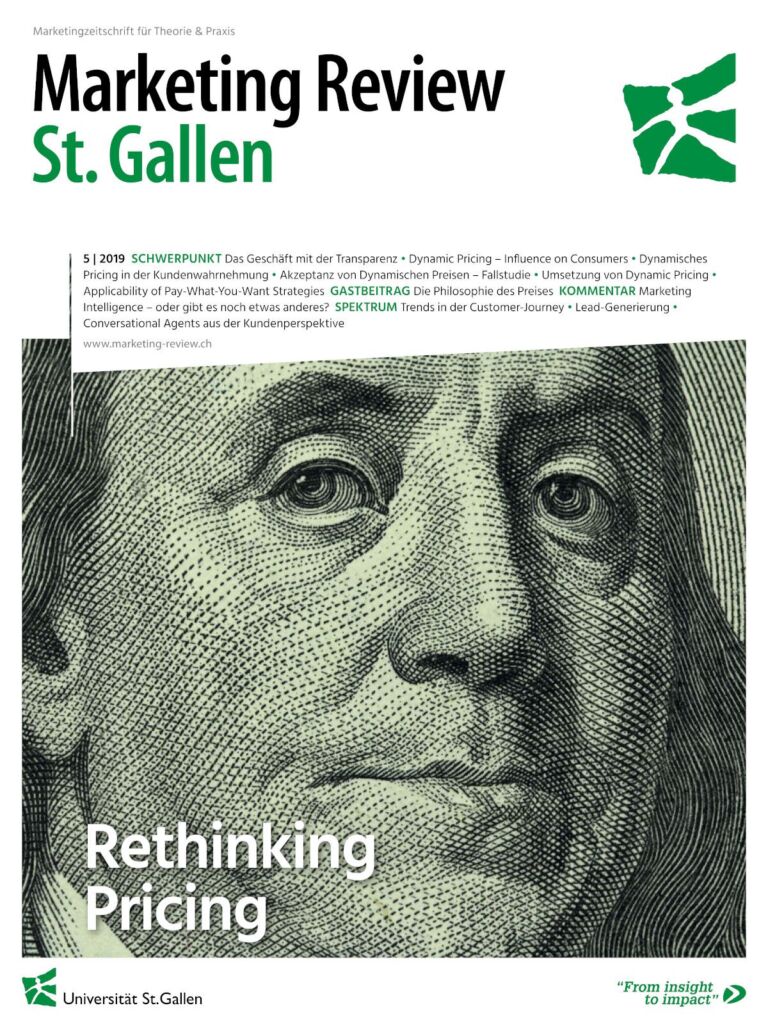Marketing Review St.Gallen 5 | 2019 "Rethinking Pricing"
Prices are changing more and more dynamically. The rapidly advancing digitalization of our economy and the strong growth in online trade have played a major role in this. Collecting data is becoming ever easier for companies, and prices for goods and services can be adjusted ever more quickly and cost-effectively. Often, one mouse click is all it takes to adjust the prices of hundreds of products.
The concept of dynamic price adjustment also makes sense from the customer perspective. Personalized prices reward customers who have been regular customers in the past. In times of low capacity utilization, consumers benefit from lower prices and are happy about better capacity utilization on the trains, for example, when travelling by train. At the same time, critical voices increase. The questions about price fairness and data protection are becoming louder and louder. “Rethinking Pricing” and thus the realignment of pricing policies can only be successful if companies address the new opportunities and threats from the customer’s perspective.
Not everything that is possible must also make sense. This generally accepted wisdom can be applied to “Pricing” without any problems. Companies must ask what their customers want and what degree of price fluctuations is still bearable. What has become established in the travel industry to improve capacity utilization quickly meets with skepticism in the food trade: For example, I have long been asking whether 50% meat promotions are not more likely to be associated with inferior quality or an imminent expiration date. It depends therefore substantially on the explanation of price adjustments.
Also the question arises from the enterprise perspective, what the motives of the ever more numerous occurring price adjustments are. You will say that I have already given the answers. It is probably the customer interest in special offers and the constant price campaigns of the competitors that trigger the daily price storm.
Don’t be angry with me, dear reader, if I have to disappoint you now: What makes a lot of sense in theory can be quite different in practice. Surprisingly, when it comes to price adjustments, we recognize a lack of orientation to the market and suspect that this is triggered by missed budget targets and overstocked inventories. In particular, the imminent danger of not being able to reduce inventories at the end of the season triggers panic attacks in management and consequently numerous rounds of price reductions. The limited view of inventories and budget targets often ruins the calculated return on investment. The latter could increase if theoretical insights from price psychology gain more influence.
The present issue of Marketing Review St. Gallen attempts to shed light on the darkness of ongoing price adjustments. The interested reader will recognize from the results of reality-oriented research as well as from numerous examples which aspects will become more important in the pricing policy of tomorrow and in “Rethinking Pricing”.
This text was released in German as editorial of the current issue of Marketing Review St. Gallen with the topic “Rethinking Pricing”. You can find the issue in our shop.
